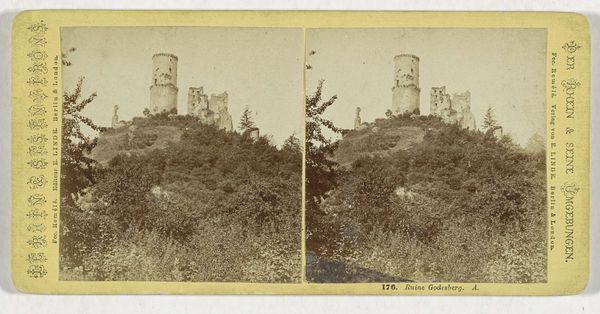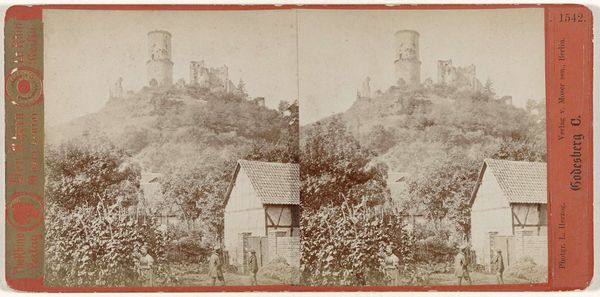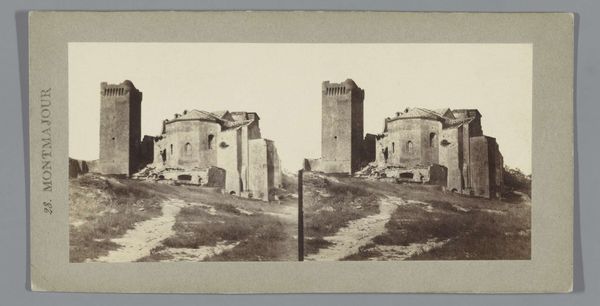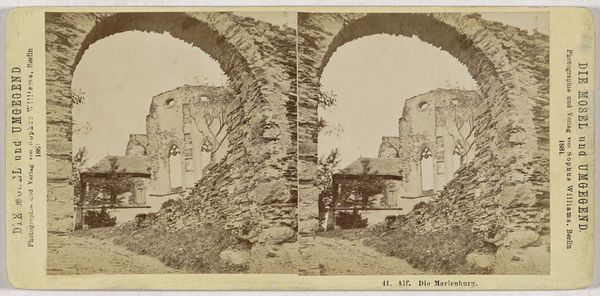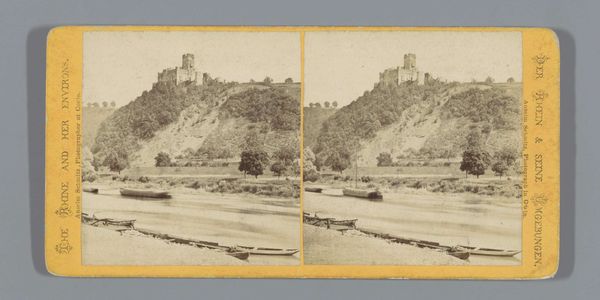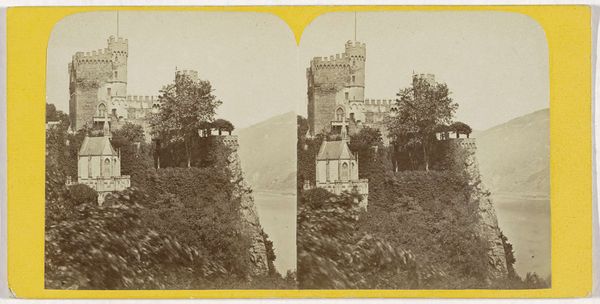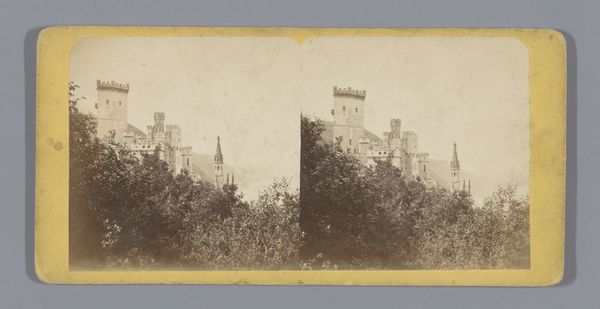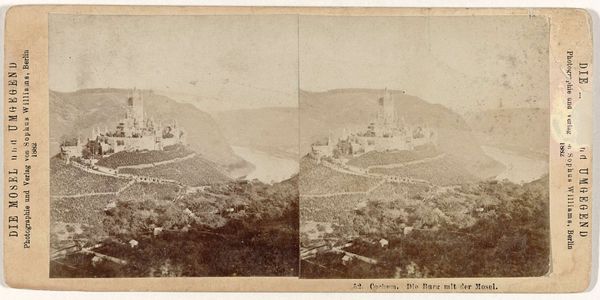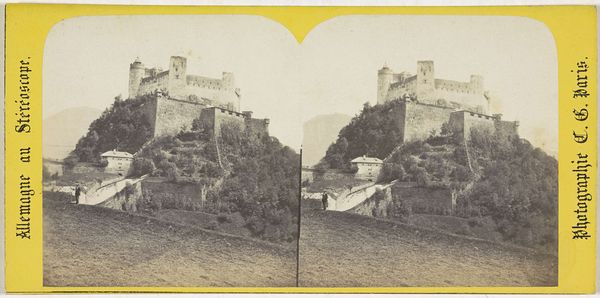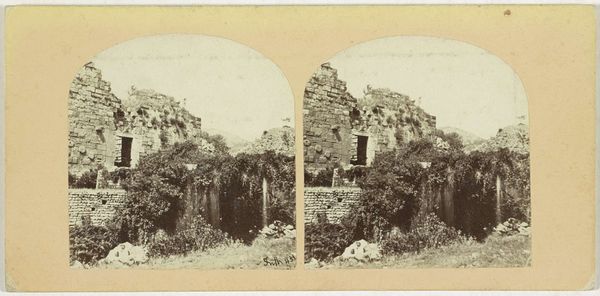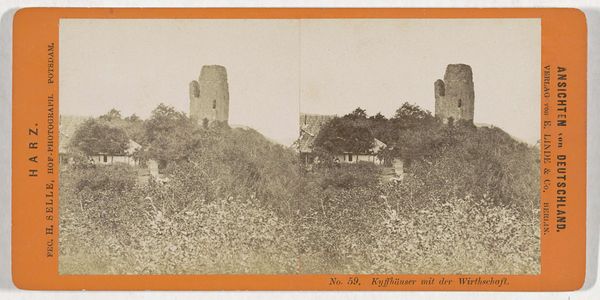
Dimensions: height 89 mm, width 177 mm
Copyright: Rijks Museum: Open Domain
Editor: This is "Ruines van de Burcht Ehrenfels bij Rüdesheim, Duitsland," or "Ruins of the Ehrenfels Castle near Rüdesheim, Germany," taken by Hippolyte Jouvin between 1860 and 1870. It’s an albumen print – quite a popular medium for landscapes then. I find the castle ruins somewhat melancholic. What strikes you most about this image? Curator: What’s striking is less the romantic ruin itself, but the *making* of this image, the materiality of the print. Albumen, derived from egg whites, speaks volumes about labor. Consider the scale of albumen production needed for widespread photography – chickens, eggs, factories processing them… it's an industrialized landscape hidden within this picturesque scene. What does this reveal about the economics behind landscape photography, its consumption as a commodity? Editor: That's fascinating, I hadn't considered the process itself! The egg whites... it sounds like an incredible amount of labor. Curator: Exactly! And beyond labor, there's the colonial context. Where did this albumen *come* from? Were there exploitative supply chains involved? Early photography often relies on resources extracted globally, obscuring its participation in a wider, unequal world system. Editor: So the image becomes less about the German landscape and more about a globalized network of resources and labour? Curator: Precisely. While seemingly documenting a scene, the photograph is itself embedded in circuits of production and consumption. Even the chemical processes required – silver nitrate, etcetera – have histories tied to industrial extraction and exploitation. Editor: This really changes how I view the image, thinking about what's 'behind' the print. Thank you. Curator: And it changes how we view art history itself, not just as a succession of images, but as a history of materials and the often-hidden labor that produces them.
Comments
No comments
Be the first to comment and join the conversation on the ultimate creative platform.
